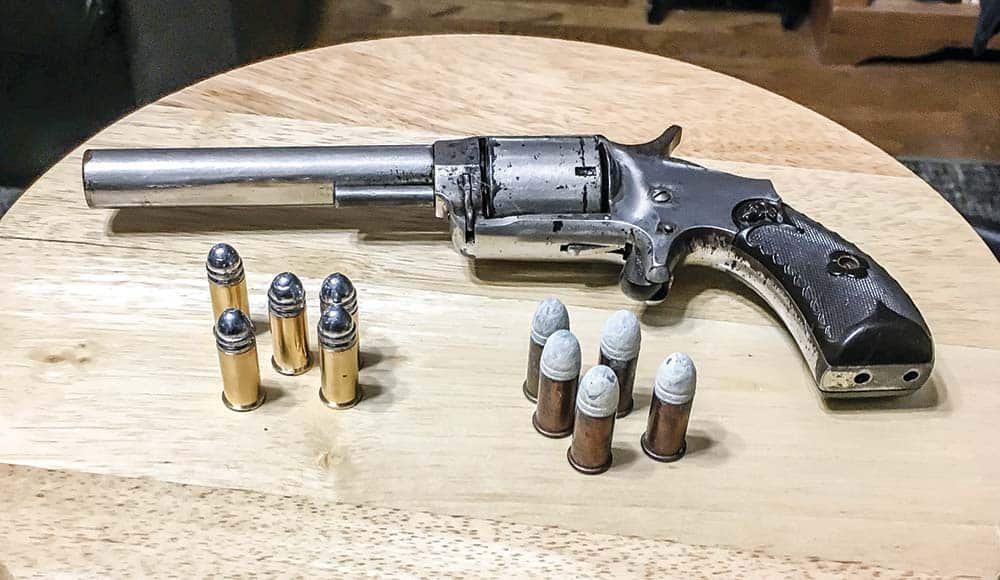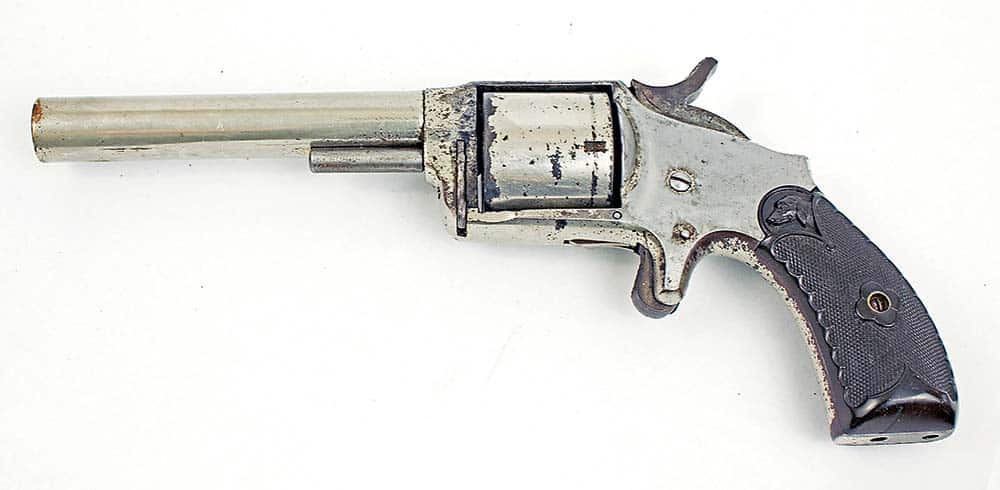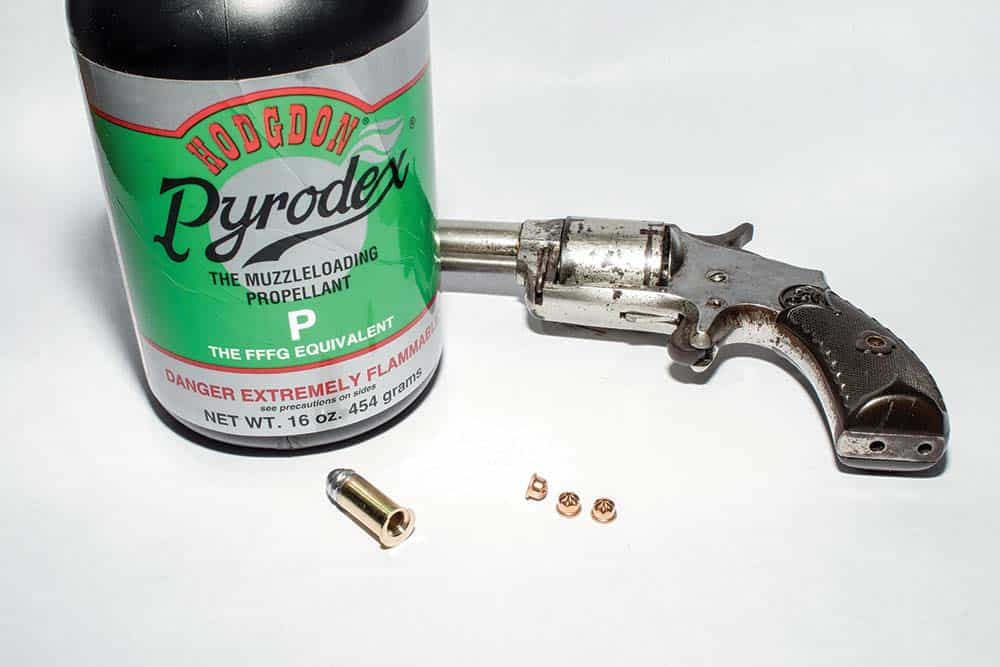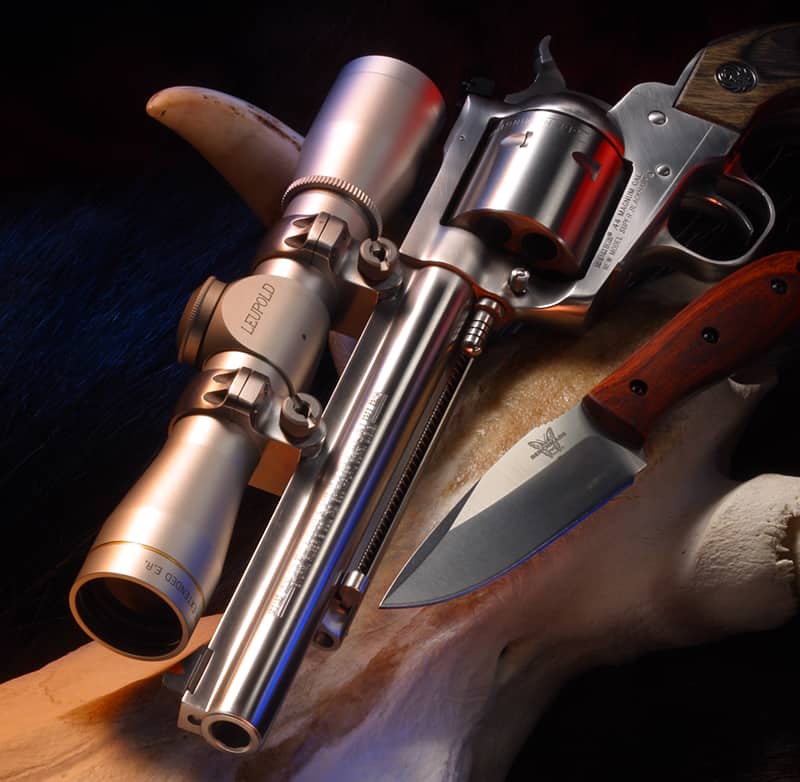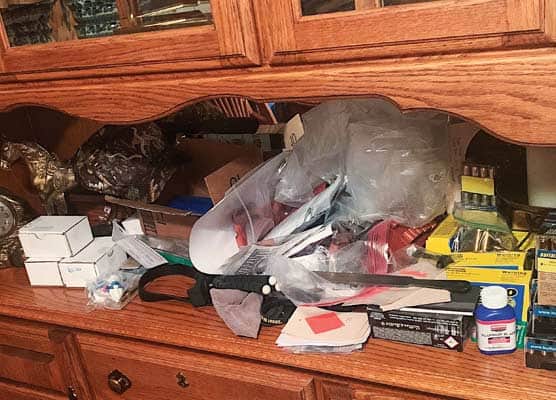Miss Lilly's Revolver
A History — Rich .38 Rimfire
Miss Lilly Stokes lived in Mississippi from 1905 until 1942. After attending Ole Miss, she became a schoolteacher in a small town, earning $30 a month. From all accounts, she was an adventurous woman who traveled about freely during her summer vacations.
The Bond
My connection to Miss Lilly is through a revolver my father gave me when I was in the 5th grade — a .38 Rimfire. According to markings on the top strap, the brand (or model) is “The Oliver,” with patents dated March 28, 1871 and May 27, 1879. A serial number on the underside of the barrel near the frame is 789. A partial box of cartridges, the lead bullets white with oxidation, was with the gun.
Dad’s recollection was my great-grandfather, Ed Barry, a rural mail carrier in the horse-and-buggy days, had given the revolver to Miss Lilly after he had retired. This would have been some time around 1930.
Miss Lilly was killed in 1942 when a Greyhound bus she was riding on was hit by a train. She was 37 years old and had the gun with her but it somehow made its way back to Great-Grandpa Ed. My great-grandmother still had it among her things when she died.
Heirloom Piece
When Dad gave me the gun he told me I shouldn’t try to shoot the cartridges accompanying it because black powder gets stronger with age and it might blow up. Naturally, I had to shoot it, but there were no new .38 Rimfire cartridges being manufactured. My only choice was to try it with the old ammo when Dad wasn’t home. I clamped the revolver in a vise attached to the workbench in our garage and set up a Memphis phone book to use as a backstop.
To make sure I didn’t get hurt if it really did blow up, I tied a string to the trigger and backed away about 10 feet. Nothing happened. I cocked the gun and tried again. Again nothing. I learned years later black powder doesn’t really get stronger with age but just the opposite. Also, the primers had decayed with age so the powder never got a chance to ignite.
Research Rewarded
Years later, with resources available to research the gun, I learned the bird dog head on the grip and the trigger spur were typical of guns made by Hopkins & Allen in Norwich, Connecticut. The company was founded in 1868 and went out of business in 1915. Some of their products were quite innovative, including the top-break revolvers they made for Merwin, Hulbert & Co.
In their earlier days, they made a relatively cheap line of handguns, which were sold through a variety of channels — many of them branded for the stores selling them retail (hence the “Oliver” label). Based on the serial number and the type of gun, the one I have was a Ranger 3 Model made around 1897. Retail prices were around $2.50.
The early H&A guns were cheaply made and most of them were nickel-plated to cover defects in manufacturing. Mine is nickeled with a solid frame with no ejector rod. Shells are ejected by removing the cylinder base pin, pulling out the cylinder and pushing the shells out one at a time with the pin. It has a tapered-wedge firing pin forged as part of the hammer. The gun weighs just over 1 lb., is 8.5″ long and 3.9″ high
Ammo Problem
I really wanted to shoot it so I did a little research and found a guy in Belgium who came up with a creative way to shoot old black powder with a rimfire gun for which there is no current ammo being made. I ordered a starter kit from H & L Publishing in Virton, Belgium consisting of five .38 Long Colt shells with the primer hole drilled out toward the rim to hold a standard .22 blank cartridge as the primer.
To load the rounds, I carefully pushed a .22 starter blank into each hole, tapping it lightly with a nylon hammer for seating, and filled the empty space with 12 grains of Hodgdon Pyrodex FFFG. Each was topped with a 108-gr. lead bullet and off to the range I went with Miss Lilly’s revolver and my five cartridges.
A Family Project
I knew it was going to be iffy. I carefully loaded the cartridges so the .22 blanks would be close enough to the outside edge to be struck by the worn firing pin. My son came along to help with the camera and we set up a chronograph in hopes of capturing the performance of these cartridges in the old gun.
I pointed at the target 10 yards away and started firing. Excuse me, I started cocking the gun and pulling the trigger. I did this four times with nothing but a click, but on the fifth try I got a bang. One out of five cartridges fired.
For some inexplicable reason, the chronometer didn’t register anything. It was working properly but nothing was recorded for Miss Lilly’s revolver.
Back at home, my son and I examined the cartridges and it became apparent the one that fired had been drilled so the primer was closer to the rim. I rotated the remaining cartridges a little until I was sure the primers were as close to the rim as possible.
Returning to the range I wasn’t shooting for accuracy. The gun doesn’t have any sights, so the mission was simply to see if I could get any more of the cartridges to fire, and to see what kind of measurement I could get on the chrono. With son and grandson watching, I cocked, aimed through the chronograph and was very surprised when the first round fired. The chronograph read “0.00,” but there was a new ding on the backstop. The second shot also fired, but again nothing registered on the chronograph.
We were done. With three out of five cartridges firing, I was glad this wasn’t a gun I’d have to bet my life upon but it is 122 years old. If you account for inflation, it would probably sell for around $72 today. Nobody builds handguns this cheaply anymore, but Hopkins & Allen built thousands.
Dad’s been long gone so he can’t get mad at me for trying to shoot the gun. He was just concerned for my safety, but it was fun bringing the old girl back to life if only for one brief outing. More fun was resurrecting the memory of Miss Lilly Stokes and the retired postal worker who cared enough to give her a gun for protection.

